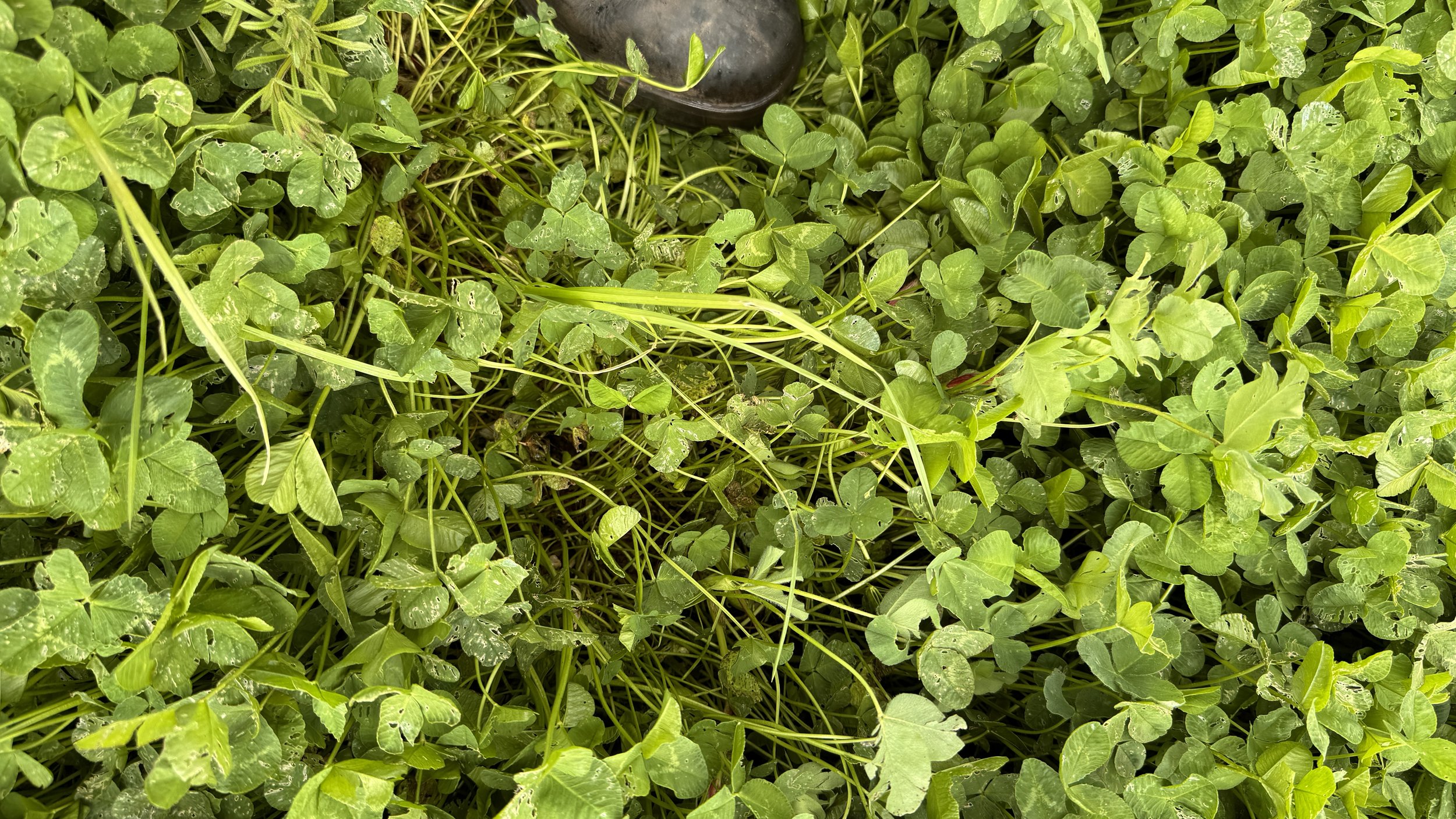
What is regenerative agriculture?
What is Regenerative Agriculture?
‘Regenerative agriculture’ describes methods of farming and grazing that aim to address critical environmental issues, in particular improving soil health by rebuilding organic matter and restoring degraded biodiversity. These practices have a huge range of benefits to both farmers and the environment, with improving soil health alone leading to increased carbon drawdown and improving the water cycle.
Why is regenerative agriculture necessary?
As early as 1921, agronomists concluded that soil fertility and health has a direct correlation with the amount of nutrients in crops. Since 95% of per-capita calorie consumption worldwide comes from crops that grow in the ground, or from food that directly relies on crops such as animal products, there is clearly a critical relationship between healthy soil and human life.
There is a problem with this relationship however, soil health has been declining due to modern intensive farming practices. This has been going on for decades, and has seen soil fertility, nutrients and ecosystems dropping significantly leading to reduced yields and lower nutrient content in food. Although some of these consequences can be mitigated through synthetic fertilisers, our traditional way of farming is not sustainable and our practices need to change.
According to EIT Food, a European Knowledge and Innovation Community, farming currently generates about one quarter of all greenhouse gases and erodes 24bn tonnes of topsoil every year, which is an area equivalent to the size of Greece. The group concludes that Europe’s farmland may only support another 60 harvests before a change in farming practices becomes essential. It’s important to note that this degradation in soil health due to intensive farming practices is not the individual farmer’s fault, it's a consequence of extremely high demands, extremely tight margins and a general lack of innovation in farming machinery and practices since the mid 20th century.

What can regenerative agricultural practices do to help?
Whilst the term ‘regenerative agriculture’ is a relatively new phrase, its principles are based on evidence and practices from both traditional methods and modern research. Expertise from around the world has contributed to key regenerative tenets that can be applied in most farms:
Minimising tillage (min-till) or completely eliminating tillage (no-till) - Traditional ploughing and cultivating, by definition, churns up layers of soil. This disrupts the natural underground ecosystem of the soil, which results in increased carbon emissions and soil erosion. The soil’s ecosystem can be improved by avoiding as much soil disturbance as possible.
Cover crops, crop rotation, companion crops and livestock manure - These are all natural ways to increase soil health and fertility without the use of any artificial chemicals. These practices also improve the soil's ability to retain water, as well as improves the soil ecosystem and increases the amount of carbon drawdown from the air which is then stored in the soil.
Restoring soil health, structure and ecosystems through compost extracts - To avoid using chemical fertilisers, farmers can utilise different forms of compost to introduce nutrients and microorganism back into the soil, ensuring the soil does not become depleted. A growing trend amongst farmers is the use of compost tea, with many farmers experimenting with unique blends.
Agroforestry - There are three main methods for practising agroforestry: silvoarable agroforestry (combining trees and crops), silvopastoral agroforestry (combining trees and livestock) and introducing hedgerows, scrub, shelterbelts and riverside buffer strips. Some of the benefits of these practices include increased livestock and crop productivity, and elimination of soil erosion.
Livestock grazing - Introducing a grazing cycle into a field's long term plan helps to reduce the stress on the soils ecosystem, improve soil health and fertility as the livestock spread manure across the whole field as they move between paddocks. It’s good for the soil and encourages naturally healthy livestock.
The value of healthy soil
In natural environments, healthy soils are teeming with life. In a single teaspoon of healthy soil there are more microorganisms in the form of fungi, bacteria and microbes than there are people on earth. Each of these microorganisms serve a different purpose, working together to make plants more resilient to disease and provide nutrients and minerals to wildlife.
Conventional agricultural practices do not value this ecosystem in the soil. Pesticides are simply used to fight disease and artificial fertilisers to boost specific nutrients, both of which wipe out the natural microorganisms found in the soil. This leads to environments where fields have major chemical imbalances, resulting in unsustainable amounts of chemicals being required to grow crops which leads to damaged soil, lower productivity, reduced biodiversity and increased quantities of carbon.
To contrast, regenerative farming practices all centre around the health of the soil, regenerating and protecting by working with nature rather than fighting against it. Healthy soil is naturally more fertile and leads to higher yields, and also improves the farms ecosystem by stopping soil erosion, building more soil, increasing carbon absorption from the air and improving water filtration. Usage of artificial chemicals is drastically reduced, leading to a much more balanced ecosystem.
Regenerative agriculture offers a clear path to a more sustainable future for food production, restoring ecosystems for the benefit of the soil and for the environment as a whole. As companies become more concerned about the sustainability of their supply chain, agriculture finds itself in a unique position where farms can actually utilise the carbon in the atmosphere and become net reducers of carbon rather than a net producer. Combined with the fact that farmers may generate more income if they apply these practices, it's clear why more and more farmers are adopting regenerative agriculture.



